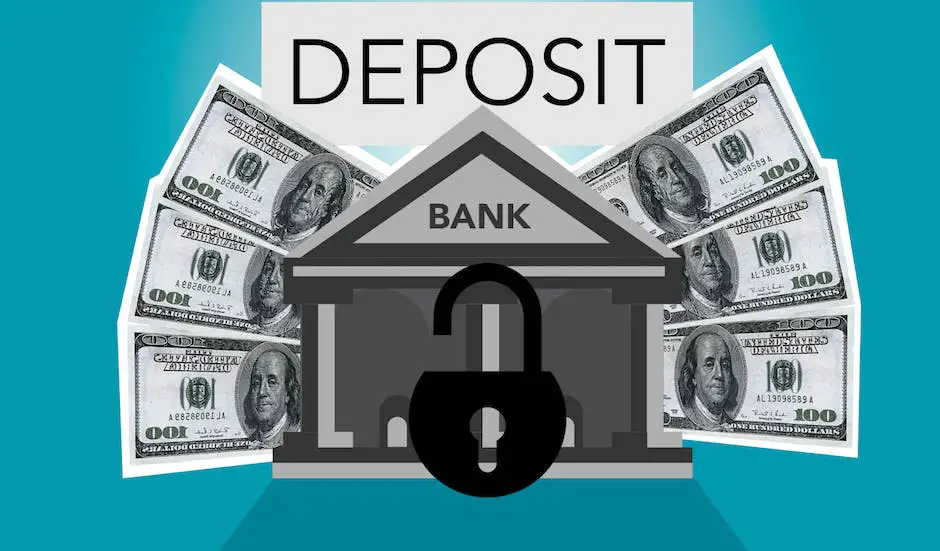In the evolving landscape of the global digital platform, issues of data privacy and protection have stepped into the limelight. The General Data Protection Regulation (GDPR) results from the demand for better data privacy and protection laws. This regulatory framework, in force since 2018, is reshaping how data is handled across every sector. From multinational companies to small businesses, this law has set new standards for data protection, impacting organizations and web platforms worldwide. In this discussion, the aim is to explore the core concepts of GDPR, its significant elements, the importance of its application on websites, and practical methods for achieving compliance.
Understanding GDPR
Understanding GDPR
The General Data Protection Regulation (GDPR) is a legislative framework established by the European Union (EU) in 2016 to govern the collection, processing, and storage of personal data. This regulation replaces the 1995 Data Protection Directive and became enforceable on May 25, 2018. It aims to standardize data protection laws across Europe, providing individuals with greater rights and transparency over their personal information. Though GDPR originated in the EU, its effects are felt worldwide. Any entity that holds or processes the data of EU citizens, regardless of its location, must comply with the rules set out by GDPR.
Principles of GDPR
The salient principles of GDPR include lawfulness, fairness, and transparency in the handling of personal data. The concept of lawfulness refers to adhering to legal obligations when processing personal data. Fairness means treating individuals justly, while transparency implies that individuals must be aware of how their data is being used.
Other key principles include purpose limitation, data minimization, and accuracy. Purpose limitation requirements that personal data be collected for explicit, legitimate reasons and not be further processed in a way incompatible with those reasons. Data minimization advocates for the collection and retention of only necessary data, and accuracy mandates that personal data be kept up to date and accurate.
Finally, the principles of storage limitation, integrity, and confidentiality remain fundamental to GDPR. Storage limitation restricts the duration of personal data retention. Integrity and confidentiality, also known as “security,” demand effective measures to safeguard personal data from unauthorized or unlawful processing, accidental loss, destruction, or damage.
Why is GDPR Significant for Websites?
GDPR is significant for websites because it requires them to adhere to strict data protection requirements. The law has put a higher burden of responsibility on those who collect and process user data. Websites must include explicit consent requests for data collection, clear privacy policies, and easy mechanisms for users to revoke consent or request data deletion.
Non-compliance with GDPR can lead to significant penalties, including fines of up to €20 million or 4% of an organization’s worldwide annual revenue, whichever is higher. Besides, failure to comply with GDPR may also lead to reputational damage, as consumers are becoming increasingly concerned about their online privacy.
Understanding GDPR Compliance for Websites
The General Data Protection Regulation (GDPR) mandates specific rules for websites to ensure data protection, starting with clear notification before any personal data collection. It’s essential that this communication is understandable to the user. It is equally important that users willingly provide their consent for their data’s usage. The website must also allow users to withdraw this consent and should facilitate the process for users to access, change or delete their personal information on request.
Furthermore, GDPR necessitates websites adopt stringent protective measures to avoid data breaches. Employing strong cybersecurity protocols and systems to defend against data theft is one such measure. Additionally, GDPR imposes the responsibility on the website to alert the relevant supervisory authority of a data breach within 72 hours of its detection.
The right to data portability also comes with GDPR compliance. This implies that users can receive their information in a user-friendly, machine-readable format and transfer it to another data controller should they desire to do so.
In the United States context, even if a business firms isn’t physically located within the EU boundaries, if it targets or does commerce with EU citizens, it falls under the realm of GDPR. Hence, American companies should be careful with their data handling practices to avoid stringent penalties under this extensive data protection regulation.

Essential Elements of GDPR
The Importance of User Consent in GDPR
In the context of GDPR, the explicit consent of users is a fundamental requirement before collecting any personal information. Websites have an obligation to communicate plainly which data will be collected, the reasons for the collection, and how it will be utilized. The granting of consent should be a voluntary act as users should have the freedom to consent or not. In cases where users opt not to provide consent, this should not negatively impact their experience on the website. To ensure this, many websites have put in place consent forms at points of data collection such as during user registration, checkout processes, or even before a user can access the website contents.
Data Protection
Data protection is at the core of GDPR compliance. Websites must ensure that they have stringent measures in place to secure the personal data of users. This can include encryption of sensitive information, frequent security audits to identify potential vulnerabilities, and strict access controls to prevent unauthorized access to data. The principle of data minimization should also be adhered to – only the minimum necessary amount of data required to fulfill a specific purpose should be collected.
Transparency
Transparency is another key element of GDPR compliance. Websites need to clearly communicate their data protection practices and privacy policies to their users. Websites are required to disclose how long they plan to keep collected data, how it will be stored, and if it will be shared with third parties. The information provided should be in a user-friendly language. If there are any changes to a website’s data protection practices, users need to be informed in a timely manner.
Breach Notification
In the event that a breach of personal data occurs, GDPR mandates prompt notification. Websites must inform both the authorities and the affected individuals within 72 hours of becoming aware of a breach. The notification should include details about the nature of the breach, what data was affected, potential consequences, and what actions the website is taking to mitigate the effects.
Right to Erasure
The GDPR grants users the “right to be forgotten,” meaning individuals can request that their personal data be deleted. Websites need to have a process in place for data deletion, and the removal of data should be comprehensive, including any data shared with third parties. Requests for erasure should be responded to without undue delay, typically within one month of receipt.
Wrapping it Up
To better adhere to GDPR regulations, websites need to focus on the following elements: obtaining user consent, maintaining strong data protection measures, upholding transparency, delivering prompt breach notification, and respecting users’ right to be forgotten. However, achieving thorough compliance is an ongoing endeavor, requiring continual assessment and updates of data management practices. Seeking assistance from a qualified data protection officer or legal counsel can ensure a seamless transition to GDPR compliance.

GDPR Compliance Necessity for Websites
The Need for GDPR Compliance
Established in 2018, GDPR, or the General Data Protection Regulation, is a series of laws put forth by the European Union enforcing specific data privacy and security guidelines for websites. Defining a new standard in data protection across different industries, GDPR has a global reach. It mandates that all websites handling information of EU residents, regardless of where the website is based from, must adhere to these outlined rules.
Non-compliance to GDPR could lead to severe repercussions for websites; both financial penalties and reputational harm. Website operators can be fined up to 20 million euros or 4% of the company’s annual global turnover, whichever is greater, for serious violations. Furthermore, minor infractions can also draw penalties up to 10 million euros or 2% of global turnover.
Alongside these stringent financial penalties, non-compliance could substantially destroy the reputation of a brand. Trust from consumers and shareholders may take a significant hit, impacting consumer loyalty and possibly resulting in loss of business opportunities. The reputational damage can extend beyond swift legal consequences, leading to longer-term business ramifications.
Advantages of GDPR Compliance
On a positive note, becoming GDPR compliant offers websites many advantages. Conformity with GDPR standards can serve as a strong value proposition for consumers who are increasingly aware of data protection and privacy issues. Users are likely to trust, and subsequently engage with, websites more if they are assured their data is being adequately protected. Such trust often translates into a stronger brand reputation and increased customer loyalty.
Moreover, remaining compliant with GDPR elevates the overall data governance of a website, offering potential efficiency and cost-saving benefits. It can lead to the identification of redundant, obsolete, or trivial data (ROT data) that can be eliminated, thereby potentially reducing data storage and management costs.
GDPR compliance also offers risk mitigation against data breaches. Adopting its principles of pseudonymization and encryption of personal data, data minimization, and timely breach notifications mean that a compliant organization will have robust mechanisms to prevent, detect, and respond to data breaches.
Achieving GDPR Compliance
There are several key steps to becoming GDPR compliant. Websites must record and document the types of personal data they collect and the purposes for which they process this data. They also need to ensure data is only kept for as long as necessary for the purpose identified, and that there is an identified lawful basis for processing data.
Websites also need to implement appropriate technical and organizational measures to protect collected data. This could include encryption, regular reviews of security measures, and ensuring ongoing confidentiality, integrity, availability, and resilience of processing systems.
Other steps include ensuring measures are taken to restore data in the event of a technical incident, conducting regular testing and assessments of effectiveness, and having processes to address individuals’ right to their data under GDPR.
It is additionally important to consider factors such as international data transfer mechanisms, the designation of a Data Protection Officer for certain types of data collection and processing, mechanisms for reporting personal data breaches to regulatory authorities within their correct timeframes, and, importantly, transparency with site visitors about data handling and their rights.
When it comes to websites, adopting GDPR compliance is about more than just avoiding hefty fines—it’s about creating transparency and fostering trust with users. This ultimately leads to improved business operations and stronger customer relationships. Complying with the robust and stringent data protection measures provided by GDPR reflects a commitment towards legal adherence and the betterment of business practices.

Website Practices for GDPR Compliance
Diving Deeper into GDPR Compliance for Websites
The General Data Protection Regulation, or GDPR, serves as a legal guide for data management, spotlighting the rights of individuals residing within the European Union. Ensuring transparency, fairness, and lawfulness in the handling of personal data is a key component of the GDPR. This vitally requires websites to gain clear consent from their users regarding any data collection.
Obtaining Clear Consent
One of the critical aspects of GDPR compliance is obtaining clear, affirmative consent from the website user before collecting any data. Consent must be freely given, specific, informed, and unambiguous. This means website users should be provided with clear, concise, and plain language information about how their data will be used. Checking a pre-ticked box does not imply consent under GDPR; users must make a proactive action to consent. Cookies or any other tracking software applied to a user’s device also require explicit consent.
Handling and Storing Data
GDPR compliance requires appropriate data handling and storage methods. Personal data should be processed lawfully, fairly, and in a transparent manner. This includes limiting data collection to necessary details only, retaining data for a specific period, and ensuring accuracy.
When storing user data, GDPR stipulates that businesses must protect against unauthorized or unlawful processing and against accidental loss, destruction, or damage. Businesses should adopt stringent security measures for data storage and regularly review their data storage practices to ensure compliance.
Secure User Data
Ensuring the security of user data is a core principle of GDPR. To achieve this, websites could adopt various security measures such as encryption of data, the use of secure network protocols, implementation of strong access controls, and regular security updates and patches.
By law, websites are required to inform users and the Supervisory Authority within 72 hours of becoming aware of any data breach. This highlights the importance of having effective security measures and robust incident response procedures in place.
Data Protection Officers
Under specific circumstances, GDPR insists websites to appoint a Data Protection Officer (DPO). The DPO will be responsible for overseeing data protection strategy and implementation to ensure compliance with GDPR regulations. Even if appointing a DPO isn’t a legal requirement for your business, you may want to consider hiring one to uphold best practices.
Understanding GDPR Compliance for Websites
Websites intent on aligning with GDPR regulations must put in place detailed policies pertaining to the collection, processing, and management of data. Essential information that should be disclosed includes the types of data gathered, its usage, the duration of storage, and the users’ rights related to their data. For easier comprehension by users, these policies should be accessible and conveyed in clear terms.
Complementing these practices, additional GDPR compliance requisites include upholding data minimization, integrity, and confidentiality principles, endorsing data accuracy, advocating storage limitations, and fostering accountability in the management of personal data. The creation and preservation of a comprehensive log of all data processing activities facilitate the implementation of these principles.

Case Studies and Real World Application
A Closer Look at Compliance: Microsoft’s Case
Microsoft, the multibillion-dollar tech corporation, firmly stands as an exemplar of how to apply GDPR compliance to its multitude of web services. The company embarked on a well-structured four-step procedure: Discovery, Management, Protection, and Reporting. The ‘Discovery’ phase involves identifying the personal data held and its location, followed by the ‘Management’ phase, focusing on how the data is used and accessed. The ‘Protection’ phase then sets up security measures to prevent, detect, and promptly respond to data breaches. The final stage, ‘Reporting,’ is tasked with the responsibility of maintaining relevant documentation, managing data requests, and issuing breach notifications.
To further simplify the process, Microsoft introduced a GDPR dashboard that assists customers in managing and monitoring their GDPR compliance. Tools provided include the Compliance Manager, an interactive dashboard that allows users to keep track of the progress and implementation of control measures. Microsoft’s adherence to transparency and its continuous updates underscore the company’s unwavering commitment to robust GDPR compliance.
Case Study 2: IBM
IBM is another organization that has successfully handled GDPR compliance. They focused on five fundamental areas, which are data protection, data breaches, data transparency, communication and control, and data portability.
In terms of data protection, IBM undertook multiple measures to provide privacy by design, including encrypting all personal data. For data breaches, IBM implemented a systematic process to detect any breach promptly and report it within 72 hours as required by the GDPR.
IBM also strengthened its communication with users, giving them clearer insights into what data is being collected and why. This transparency extended to offering users the ability to control and rectify their data, ensuring they felt in control of their information.
Data portability was another area of focus for IBM, ensuring users could easily transfer their data from one service provider to another. This allows customers to have greater control over their data.
Case Study 3: Google
Google is another tech giant that has shown commitment towards GDPR compliance. They’ve updated their privacy policies and made them more understandable and accessible, an important aspect of GDPR.
One of Google’s significant moves was conducting a thorough review of their products, contracts, and documentation to ensure that they meet the principles of the GDPR. Google developed tools to provide individuals with control over their data, including ways to export, delete, or migrate their data.
Google has also been open about how it uses data, ensuring that users are aware of how their information is being used. This promotes transparency and trust. Google has implemented safety measures to ensure the highest level of security for users’ personal data.
In conclusion, these three tech giants have shown their commitment and diligence in complying with GDPR guidelines and offer excellent real-world examples of successfully implementing these measures. Their methods focus on control, transparency, protection, and the rights of the individual, all pivotal aspects of GDPR compliance.
These case studies should provide insight into the steps a company must take to become GDPR compliant. Following these examples can assist in understanding and implementing the necessary measures toward GDPR compliance for your website.

Photo by pawel_czerwinski on Unsplash
After delving deep into the principles, importance and features of the GDPR, it can be said that data protection isn’t just a legal obligation, but a way to safeguard the rights of every individual and build Trustworthiness. With the omnipresence of digital transactions and interactions, data protection has evolved from being an afterthought to a priority. By sharing practical measures and demonstrating real-world case studies, this discussion has depicted that while GDPR compliance may seem overwhelming initially, it can fulfill a critical role in maintaining a robust digital landscape that respects and protects the data privacy rights of all users.
